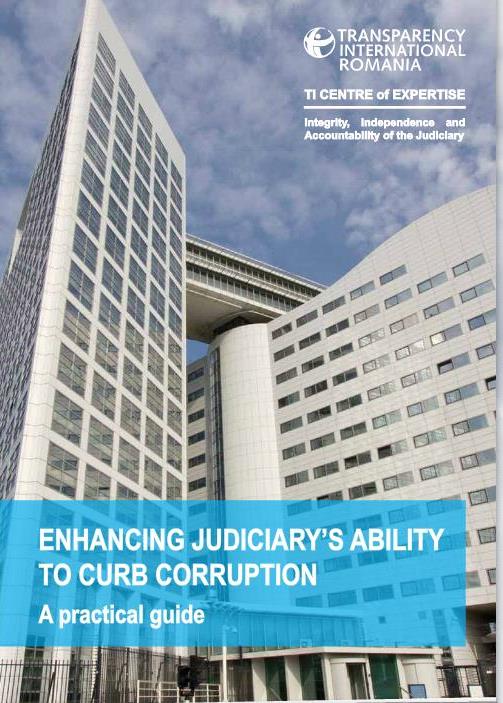Enhancing Judiciary's Ability to Curb Corruption
a practical guide
The Guide provides judicial offciials and decision-makers with a reference framework for consolidating integrity within the judiciary and for judicial reform, where it is required. It also provides civil society with a set of benchmarks against which they can hold their national judiciaries accountable and that can help drive their advocacy efforts.
Bringing to fruition the existing TI knowledge, this Guide is the initial step of a broader TI global initiative on the 'Integrity, Independence and Accountability of the Judiciary', through a dedicated Centre of Expertise. Building on the experience gained by TI in many countries, as well as on the expertise of its individual members or other organisations, the Centre aims at further developing a second generation of practical tools and approaches to facilitate the work in the sector and support the existing advocacy efforts.
Guidebook structure
Part 1
overview of the problem of corruption within the judicial system: criminal justice institutions must be they themselves free of corruption and judicial systems must have the necessary strength to implement the laws against corruption;
Part 2
reviews the principles agreed by international conventions for judicial conduct, and brings explanations on their meaning and extend in different types of legal systems;
Part 3
lists the required standards for the operation of judicial systems and the conduct of actors within judicial systems which ensure the proper implementation of the defined principles. The standards have been synthetized from the existing international norms, as well as from the national best practices in countries where our Chapters operate.
Part 4
analyses the corruption risks and legal loopholes that may prevent a corruption case from being pursued through the different phases of the criminal justice system: from detection and investigation phases, through the prosecution and adjudication of cases to the final phase of enforcing sanctions.
Part 5
sets out proposals for tools that Transparency International can develop to help judicial reformers set their advocacy priorities knowledge based, and catalyze people support.
Part 6
a reference matrix with the standards and the respective international – global and regional - conventions where they are stipulated
download
